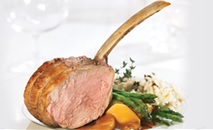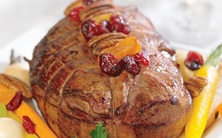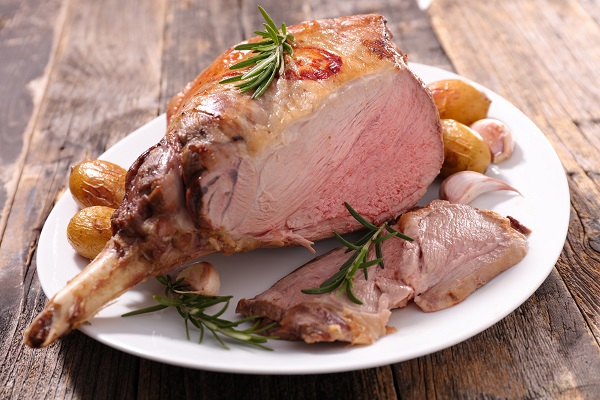Roasting is a cooking method that uses dry heat where hot air envelops the food, cooking it evenly on all sides with temperatures of at least 150 °C (~300 °F) from an open flame, oven, or other heat source. Roasting can enhance flavor through caramelization and maillard browning on the surface of the food. Roasting uses indirect, diffused heat (as in an oven), and is suitable for slower cooking of whole cuts of veal or lamb. A roast can take one, two, even three hours to cook—the resulting meat is tender. Until the late 19th century, roasting by dry heat in an oven was called baking. Roasting originally meant turning meat on a spit in front of a fire. It is one of the oldest forms of cooking known.

• A low-temperature oven, 95 °C to 160 °C (200 °F to 325 °F), is best when cooking with larger cuts. This is not technically roasting temperature, but it is called slow-roasting. The benefit of slow-roasting an item is less moisture loss and a more tender product (ideal for veal shoulder roasts, lamb leg roast etc.). More of the collagen is dissolved in slow cooking. At true roasting temperature of 200 °C (400 °F) or more, the moisture within is lost at a high rate.
• Cooking at high temperatures is beneficial if the cut is tender enough—as in a veal tenderloin, striploin and veal/lamb rack—to be finished cooking before the juices escape. A reason for high temperature roasting is to brown the meat on the outside, similar to browning in a pan before pot roasting or stewing it. Fast cooking gives more variety of flavor, because the outside is brown while the center is much less done.
• The combination method uses high heat just at either the beginning or the end of the cooking process, with most of the cooking at a low temperature. This method produces the golden-brown texture and crust, but maintains more of the moisture than simply cooking at a high temperature, although the product will not be as moist as low-temperature cooking the whole time. Searing and then turning down to low is also beneficial when a dark crust and caramelized flavor is desired for the finished product. Note that searing in no way prevents loss of moisture: moisture loss is simply a function of heat and time. The outside is brown and the rest is done fairly uniformly.

For festive rosemary garlic lamb leg roast preheat oven to 400 degrees F. Sprinkle lamb leg with lemon juice and rub minced garlic and chopped rosemary leaves over lamb. Season with salt and pepper and place in roasting pan. Place in oven and roast for 30 minutes. Reduce temperature to 350 degrees F and continue to roast to desired doneness (using meat thermometer, 145 degrees F at center of leg for medium rare). Remove lamb from pan and let stand for 10-15 minutes before carving.



